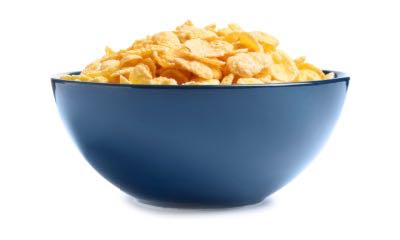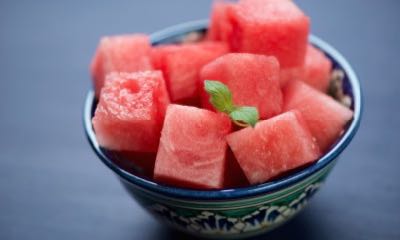You want to eat right and don’t know where to start. So, you find yourself surfing the web for examples of “good” and “bad” foods. A list of healthy options is essential for paving the road to a healthy diet. But lists do little to educate you on why good foods are, in fact, good for you.
You can pick better ingredients for healthier meals if you understand how the food you eat creates usable energy in your body. The glycemic index can be just the tool you need to build a better understanding of how food works in your body.
You already know that the food you eat becomes energy. But learning how to use the glycemic index can illuminate just how much energy you can derive from certain foods. It can also teach you about the quality and dependability of that energy.
Glucose—Derived from Food to Fuel the Body

The energy currency for your body is glucose. This simple sugar is an abundant carbohydrate in your diet. Not all of the carbohydrates you consume are in the form of glucose. But they can be transformed to provide this fuel. Throughout digestion, complex carbs are broken down into single glucose molecules to be used for energy or undigested and used to help remove waste.
Glucose—once it’s in this pure form—travels through the blood stream. It provides cellular energy that can be harnessed immediately. But not all energy is needed right away. Sometimes this energy is stored in the liver and muscles as glycogen instead. The pancreas helps your body make decisions about when to use or store glucose.
These decisions are important. Keeping blood sugar levels in a healthy, normal range makes it easier for your body to manage all the energy it gets from your diet.
Glycemic Index
The glycemic index (GI) provides a way to help you predict the blood-glucose-raising potential of a food. It’s a way of measuring the rate at which carbohydrates are broken down and appear in blood as simple sugars. In general, the more refined and processed the food, the faster it is broken down and the higher the GI.
Some foods can pump a lot of sugar into the blood stream in a short period of time. Foods that increase blood glucose levels quickly are called high-glycemic foods. Others let go of small amounts of glucose over the course of several hours. These are low-glycemic foods.

Let’s look at how glycemic index is calculated. The standard for comparison is glucose itself. It has a glycemic index of 100. The fact that the GI of glucose is 100 is incredibly significant. It represents how quickly food can be converted to blood glucose.
To find the glycemic index of all other foods, they must be compared to the GI of glucose. A pancake, an orange, and a handful of peanuts have very different GIs. That is because they are digested at different rates and cause different blood sugar responses.
| Food | Glycemic Index (GI) |
| Glucose | 100 |
| Pancake | 67 |
| Orange | 42 |
| Peanuts | 18 |
(For a more comprehensive chart, there are a few good options you can turn to: The University of Sydney, Linus Pauling Institute, and Research Gate.)
When you eat a pancake, orange, peanuts, or any other food, your blood sugar increases. A medium-sized pancake creates a blood-glucose response that’s 67 percent of the response to pure glucose. An orange, is 42 percent of that glucose response. And peanuts influence blood glucose very little when compared to glucose—only 18 percent.
Basically, when you know the GI of any food, you know how it will generally impact blood-sugar levels relative to glucose. Glycemic index tables list hundreds of foods. Some with high, moderate, and low GIs. Here’s how the categories break down:
- High GI >= 70. Potatoes, cornflakes, jelly beans, watermelon, and white bread are all high GI foods.
- Moderate GI 56-69. Rice, banana, honey, and pineapple are moderate GI foods.
- Low GI < 55. Lentils, carrots, apples, oranges, and pears are all low GI foods.
The glycemic index has a lot of strengths. It highlights the ability of foods to raise blood sugar; and allows blood-glucose response comparison between foods. But the glycemic index doesn’t consider the quantity of the food being consumed.
GI values remain the same for all foods, no matter how much you eat. But that doesn’t mean that eating a lot of a high-glycemic food has the same effect on blood sugar as eating only a little bit. In fact, the opposite is true.
So, how can you use the glycemic index to make smart eating choices? It is hard to judge the difference in quality of foods when pretzels, white bread, and crackers have similar GIs to watermelon and pineapple. Luckily, there’s a solution.
Glycemic Load
Cue glycemic load. A robust, qualitative, and quantitative way to use information from the glycemic index to understand how food affects blood sugar.
Glycemic load (GL) accounts for the quantity of the food in question. GL reflects the blood-glucose-raising potential of how much of a certain food you eat. You can calculate glycemic load for any given food by dividing the GI by 100, then multiplying that number by the amount of available carbohydrates in a serving.
GLfood = (GIfood / 100) x (grams of carbohydrates – grams of fiber)
* Remember, fiber is the material in food that isn’t fully digested by your body. So, when figuring out how many available carbohydrates are in your favorite snack, subtract the grams of fiber from the total grams of carbohydrates.
The values associated with glycemic load are much smaller than glycemic index:
- High GL >= 20.
- Moderate GL 11-19.
- Low GL < 10.
GL takes into consideration the amount of digestible carbohydrates in each serving of food. This is important because sometimes foods with similar GIs have dramatically higher carbohydrate counts.

To demonstrate how glycemic load accounts for carbohydrate content, let’s look at an example. A cup of watermelon and a cup of cornflakes have very similar GIs. They are both high-glycemic foods. But cornflakes and watermelon have very different GLs.
The GL for a cup of cornflakes is 20, making it a high-glycemic-load food. The watermelon’s GL is only eight. These numbers tell you that there are a lot more carbohydrates in one serving of cornflakes than there are in watermelon. To be exact, one cup of cornflakes has 26 grams of carbs. The same amount of watermelon has only 11.

Since watermelon has fewer carbs, it also has fewer calories per serving. Watermelon is a better choice than cornflakes when you’re looking for a quick snack. It’s less calorie dense but just as effective at providing the energy you need to make it to your next meal.
What if instead of one cup of watermelon, you ate two cups? GL reflects the size of your portion of food. It can tell you that the amount of food you eat also influences your blood sugar.
Generally, low GL foods have fewer calories than high GL foods. So high calorie foods aren’t the only option when you need a boost of energy. Low-glycemic-load foods are equipped to provide fuel for your body with a lower risk of overeating and weight gain.
Using GI and GL to Shape a Healthy Diet

You already know that high GI foods act rapidly to influence blood sugar, providing quick energy. However, this energy is usually short-lived and hunger soon returns. This could potentially lead to overeating and weight gain.
Low glycemic index foods affect blood sugar more slowly and steadily. These foods provide greater satiety and longer lasting, more consistent energy. That makes eating less (and maintaining weight) easier.
Spotting high GI/GL and low GI/GL foods takes practice. Luckily, there are easy rules to follow that can set you up for success.
- Create meals with lots of low and moderate GI/GL foods. Limit high GI/GL foods because they are high in calories and cause blood-sugar highs.
- Look for non-starchy veggies and fruits. Apples, berries, pears, beans, broccoli, and cauliflower are low GI/GL foods. They will provide plenty of energy over a sustained period of time due to their high fiber content.
- When in doubt, reach for whole grains. Oats, brown rice, barley, and whole wheat are great choices. Again, lots of natural fiber means longer lasting energy.
- Avoid packaged and processed foods that are low in protein, fiber and fats. These types of foods are typically high in simple carbohydrates while low in other important macronutrients giving them higher GI/GL values.
- Moderation matters. Regardless of GI/GL, eat mindfully. Try your best to listen to your body and its signals. When you feel tired and need some energy, eat a healthy snack. When you are full, end your meal and get up and move.
There are lots of ways to make healthy eating choices. Being aware of how the food you eat could affect your blood sugar is just another way to maintain good nutrition and good health.
About the Author
Sydney Sprouse is a freelance science writer based out of Forest Grove, Oregon. She holds a bachelor of science in human biology from Utah State University, where she worked as an undergraduate researcher and writing fellow. Sydney is a lifelong student of science and makes it her goal to translate current scientific research as effectively as possible. She writes with particular interest in human biology, health, and nutrition.
© 2022 Ask The Scientists. All rights reserved.All information contained on this page is for educational purposes and intended for residents of the United States.
No comments:
Post a Comment